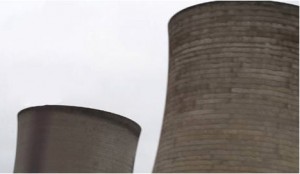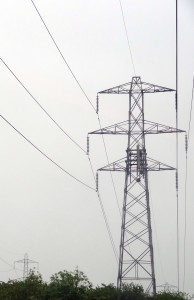 EDF, one of the big six energy retailers in the UK, has agreed to pay out a record £4.5m. £1m of this will go to funding an energy advice centre; the rest will go to providing £50 each to 70,000 ‘vulnerable customers’ who struggle to pay their bills and who receive the government’s warm home discount.
EDF, one of the big six energy retailers in the UK, has agreed to pay out a record £4.5m. £1m of this will go to funding an energy advice centre; the rest will go to providing £50 each to 70,000 ‘vulnerable customers’ who struggle to pay their bills and who receive the government’s warm home discount.
The agreement was made with Ofgem after an investigation into mis-selling, both on the doorstep and over the phone. Customers were persuaded to switch energy suppliers with the promise of savings on their bills. As the FT articles states:
Ofgem found that EDF’s sales force did not always provide complete information to customers on some contract terms, or on the way in which their monthly direct debits had been calculated. In some cases, telesales agents claimed savings without knowing whether they were accurate for the specific customer on the call, the regulator said.
Ofgem did not accuse the company of directly sanctioning such practices, but rather of weak monitoring and control of its sales force’s actions.
The £4.5m payment is in lieu of a fine. Consumer groups have welcomed this, preferring the company to pay compensation to a fine, which would have simply increased Treasury funding.
It is the first settlement in a broader investigation into mis-selling, involving four of the six major suppliers.
Articles
EDF to pay out £4.5m in mis-selling case Financial Times, Guy Chazan and Hannah Kuchler (9/3/12)
EDF agrees to pay £4.5m misleading sales ‘fine’ Guardian, Lisa Bachelor (9/3/12)
Is it a fine? Is it a penalty? No, it’s EDF’s mystery Ofgem payment Management Today, Rebecca Burn-Callander (9/3/12)
‘Misleading claims’ cost EDF a £4.5m payout from watchdog , Independent, Tom Bawden (10/3/12)
EDF Energy agrees to pay a £4.5m ‘fine’ BBC News (9/3/12)
 EDF Energy agrees to pay a £4.5m ‘fine’ BBC News, John Moylan (9/3/12)
EDF Energy agrees to pay a £4.5m ‘fine’ BBC News, John Moylan (9/3/12)
More energy payouts could follow EDF’s £4.5m The Telegraph, Kara Gammell (9/3/12)
Ofgem ruling
EDF energy agrees to invest £4.5 million to help vulnerable customers following Ofgem investigation Ofgem
Questions
- What types of market failure are present in the energy supply industry?
- What are the arguments for and against fines being paid directly to victims of crime rather than to the government?
- In what ways could the energy industry be made more competitive?
- Why do the utilities, such as gas, electricity and water, require their own regulator rather than simply being subject to competition law?
 Is Google’s Android catching up with Apple’s iOS in the market for apps? With Android tablets and smartphones taking an ever larger proportion of the market, you would expect so. In the third quarter of 2011, 53% of smartphone shipments used Google’s Android system, compared with only 15% with iOS.
Is Google’s Android catching up with Apple’s iOS in the market for apps? With Android tablets and smartphones taking an ever larger proportion of the market, you would expect so. In the third quarter of 2011, 53% of smartphone shipments used Google’s Android system, compared with only 15% with iOS.
However, Apple is still ahead of Google in the share of apps downloads. To date, there have been 18 billion downloads from the iOS App Store for iPhone, iPad and iPod Touchs compared with 10 billion downloads of Android apps. But Android downloads are growing faster and are set to overtake those of iOS apps in the coming months. This should be boosted with the new Ice Cream Sandwich Android operating system.
But what about revenues earned from downloads? Here the picture is very different. Android Marketplace has earned around $330 million gross revenue for paid apps. Apple’s App Store, by contrast, has earned over 15 times as much: nearly $5000 million. The reason is that 99% of Android apps are free; the figure for App Store apps is 86%. But why is this so and how can Android earn revenues from its apps? And how can app developers earn revenues from the Android market? The following articles look at the economics of apps.
Android Vs. iPhone: The Economics Of Apps Financial Edge, Manish Sahajwani (6/1/12)
Google has an Amazon problem MSN Money, Jim J. Jubak (25/1/12)
Android and the economics of apps BBC News, Rory Cellan-Jones (7/12/11)
Apple Getting Best Of The Android Vs. iPhone Economics Forbes, Manish Sahajwani (6/1/12)
Fragmentation Is Not The End of Android cek.log, Charlie Kindel (14/1/12)
Questions
- Why are most Android apps free to download?
- What is the business model for (a) developing and (b) offering Android apps?
- How can money be made from free apps?
- What are the long-term strengths and weaknesses in Apple’s apps business model?
- Assess Amazon’s business model for apps for Kindle users.
 Every firm has been hit by the recession and for most, it’s been bad news. However, the latest firm to file for bankruptcy is an interesting case, as the causes extend well beyond a weak economy. The company in question? Eastman Kodak. Renowned for inventing the hand-held camera and being the market leader, selling 90% of photographic film and 85% of all cameras in the USA in 1976, the company has since seen a large change in its fortunes.
Every firm has been hit by the recession and for most, it’s been bad news. However, the latest firm to file for bankruptcy is an interesting case, as the causes extend well beyond a weak economy. The company in question? Eastman Kodak. Renowned for inventing the hand-held camera and being the market leader, selling 90% of photographic film and 85% of all cameras in the USA in 1976, the company has since seen a large change in its fortunes.
Massive competition has emerged from all over the globe and the company has seemed to lag behind the digital revolution. Arguably, unwilling to take risks and making some strategic errors, Kodak saw its stock tumble from $94 in 1997 to under $1 per share in 2012. Since 2004, Kodak has only seen one profitable year. With massive competitors in the world of digital photography, the market has become a highly competitive one. As Rupert Goodwins, the editor of technology website ZDNet said:Kodak made all its money from selling film, then the digital camera came along and now no-one’s buying film. It’s not like they didn’t see it coming. Kodak hesitated because they didn’t want to eviscerate their business.
By filing for bankruptcy, Kodak is protected and its operations will continue for the time being, perhaps giving the company time to have a rethink and a reorganization. Eastman Kodak has previously tried to take a new direction and has been moving away from film and towards its printer, software and packing businesses. The problem is that these markets already have some very strong competitors: Hewlett Packard, Canon and Epson. It’s a difficult job to break into this market and gain market share.
The future of the company is very much in the balance and as reorganization of its operations looks inevitable, so does a loss of jobs. Thank goodness it only employs some 19,000 workers and not the 145,000 it did back in its day. Bankruptcy will certainly keep the creditors at bay for the time being, but it is by no means a long term solution to the company’s ailing profits. The following articles consider this ‘Kodak moment’.
Eastman Kodak files for bankruptcy protection BBC News (19/1/12)
Eastman Kodak files for bankruptcy The Christian Science Monitor, Ben Dobbin (19/1/12)
Kodak: From Brownie and roll film to digital disaster BBC News, James Cowling (19/1/12)
Kodak files for bankruptcy CNN Money, Aaron Smith and Hibah Yousuf (19/1/12)
Photography pioneer Kodak files for bankruptcy Reuters, Jonathan Stempel (19/1/12)
Kodak: 30 fascinating facts The Telegraph, Matthew Sparkes (19/1/12)
Kodak: why the moment has oassed Guardian, Simon Waldman (19/1/12)
Questions
- Using the product life cycle, explain where Kodak currently lies.
- To what extent are Kodak’s current problems related to the obsolescence of their products and not the recession?
- What strategic errors have Kodak made?
- What has caused Kodak’s collapse in share prices and profitability?
- Why is Eastman Kodak finding it difficult to gain market share in other markets, such as printing?
- What options are open to Kodak for the future if it is to become profitable once more?
 In an earlier blog Energy profits margins up by over 700% we analysed the increasing pressure on many households as they saw their energy bills increase in price year on year. This helped the big six energy companies achieve a 700% rise in their profits.
In an earlier blog Energy profits margins up by over 700% we analysed the increasing pressure on many households as they saw their energy bills increase in price year on year. This helped the big six energy companies achieve a 700% rise in their profits.
However, it also sparked interest by the regulator Ofgem, which was looking to ensure that consumers found it easier to make price comparisons and create a more competitive market. One issue that Ofgem were looking into was how to make the energy sector more open to competition, given that the big six companies own the power stations and hence this acts as a barrier to the entry of new firms.
The latest announcements from some of the big energy companies will therefore come as a pleasant turn of events for Ofgem. On Wednesday January 11th 2012, EDF announced that it would be cutting its energy prices by 5% from 7th February in response to a fall in wholesale costs. Only a day later, Npower announced its plans to cut its tariffs by 5% from 1st February. British Gas cut its prices by 5% with immediate effect and SSE will reduce its gas prices by 4.5% from March 26th.
Is this a sign that the market is becoming more competitive thanks to Ofgem or is there another explanation? For the past 2 winters, temperatures have been consistently below freezing and hence demand for gas/electricity was at an all time high, speaking concerns of gas shortages. However, with the mild winter we are currently experiencing (I hope I haven’t jinxed it!) demand for heating etc has been significantly lower, which has reduced wholesale costs and the big six companies have begun to pass these savings on to their customers. Yet, despite this seemingly good news, are they being as ‘kind’ as we think? Most of the companies are cutting their prices by about 5%, yet wholesale prices fell by significantly more than that. Furthermore, over the past few years, customers have seen their tariffs increase significantly – by a lot more than 5%. To some extent, this confirms the criticism levelled at the energy sector – when costs rise, they are quick to pass on the full costs to their customers. But, when costs fall, they are slow to pass on only a fraction of their cost savings. The following articles consider this issue.
Npower will cut gas prices by 5% BBC News (13/1/12)
EDF cuts gas price by 5% Reuters, Karolin Schaps and Henning Gloystein (11/1/12)
British Gas readies push to promote price cut MarketingWeek, Lara O’Reilly (13/1/12)
British Gas cuts prices by 5% Independent (13/1/12)
Energy suppliers do battle in the war of modest price cuts The Telegraph, Emily Godsen (13/1/12)
British Gas and SSE follow EDF Energy price cut Financial Times, Guy Chazan and Sylvia Pfeifer (11/1/12)
British Gas cuts electricity prices, but keeps gas on hold Guardian, Hillary Osborne (12/1/12)
British gas and SSE announce price cuts (including video) BBC News (12/1/12)
More power firms cut energy tariffs The Press Association (12/1/12)
Questions
- In which market structure would you place the energy sector? Explain your answer.
- What is the role of Ofgem? What powers does it (and the other regulators have)?
- Using a demand and supply diagram to help you, explain why wholesale costs have fallen.
- Why have the energy companies only passed on about 5% of cost savings to their customers, despite falls in wholesale costs of significantly more than that?
- Do you think price wars are likely to break out in this sector? Are they in the interests of consumers?
- Why did energy prices increase so quickly last year and the year before? Use a diagram to help you.
There is a growing consensus amongst the political parties in the UK that something needs to be done to end the huge pay rises of senior executives. According to the High Pay Commission, directors of FTSE 100 companies saw their remuneration packages rise by 49% in 2010. Average private-sector employees’ pay, by contrast, rose by a mere 2.7% (below the CPI rate of inflation for 2010 of 3.3% and well below the RPI inflation rate of 4.6%), with many people’s wages remaining frozen, especially in the public sector. (See Directing directors’ pay.) In 1979 the top 0.1% took home 1.3% of GDP; today the figure is 7%.
But agreeing that something needs to be done, does not mean that the parties agree on what to do. The Prime Minister, reflecting the views of Conservative ministers, has called for binding shareholder votes on top executives’ pay. The Liberal Democrats go further and are urging remuneration committees to be opened up to independent figures who would guard against the cosy arrangement whereby company heads set each other’s pay. The Labour Party is calling for worker representation on remuneration committees, simplifying remuneration packages into salary and just one performance-related element, and publishing tables of how much more bosses earn than various other groups of employees in the company.
So what measures are likely to be the most successful in reining in executive pay and what are the drawbacks of each measure? The following articles consider the problem and the proposals.
Articles
Parties draw up battle lines over excessive executive pay Guardian, Patrick Wintour and Nicholas Watt (9/1/12)
 David Cameron’s plans for executive pay may not end spiralling bonuses Guardian, Jill Treanor (8/1/12)
David Cameron’s plans for executive pay may not end spiralling bonuses Guardian, Jill Treanor (8/1/12)
Executive pay: what would Margaret Thatcher have done? Guardian Politics Blog, Michael White (9/1/12)
Businesses tell the PM he’s wrong about ‘fat cat’ pay Independent, Nigel Morris (9/1/12)
Directors’ pay is not the Government’s business The Telegraph, Telegraph View (9/1/12)
I’ll end merry go round of bosses’ pay, says David Cameron Scotsman (9/1/12)
Find a place at the table for public interest directors Scotsman, leader (9/1/12)
Cameron vows executive pay crackdown Financial Times, George Parker (9/1/12)
Q&A: Voting on executive pay BBC News (8/1/12)
 Will shareholders crack down on executive pay? BBC News, Robert Peston (8/1/12)
Will shareholders crack down on executive pay? BBC News, Robert Peston (8/1/12)
Why didn’t investors stop high executive pay? BBC News, Robert Peston (9/1/12)
Report
Cheques With Balances: why tackling high pay is in the national interest Final report of the High Pay Commission (22/11/11)
Questions
- Why has the remuneration of top executives risen so much faster than average pay?
- What market failures are there in the determination of executive pay?
- What insights can the theory of oligopoly give into the determination of executive pay?
- Compare the proposals of the three main parties in the UK for tackling excessive executive pay?
- To what extent is it in the interests of shareholders to curb executive pay?
- Why may it be difficult to measure the marginal productivity of senior executives?
- To what extent would greater transparency about pay awards help to curb their size?
- What moral hazards are involved in giving large increases in remuneration to senior executives?
 EDF, one of the big six energy retailers in the UK, has agreed to pay out a record £4.5m. £1m of this will go to funding an energy advice centre; the rest will go to providing £50 each to 70,000 ‘vulnerable customers’ who struggle to pay their bills and who receive the government’s warm home discount.
EDF, one of the big six energy retailers in the UK, has agreed to pay out a record £4.5m. £1m of this will go to funding an energy advice centre; the rest will go to providing £50 each to 70,000 ‘vulnerable customers’ who struggle to pay their bills and who receive the government’s warm home discount. EDF Energy agrees to pay a £4.5m ‘fine’ BBC News, John Moylan (9/3/12)
EDF Energy agrees to pay a £4.5m ‘fine’ BBC News, John Moylan (9/3/12)

